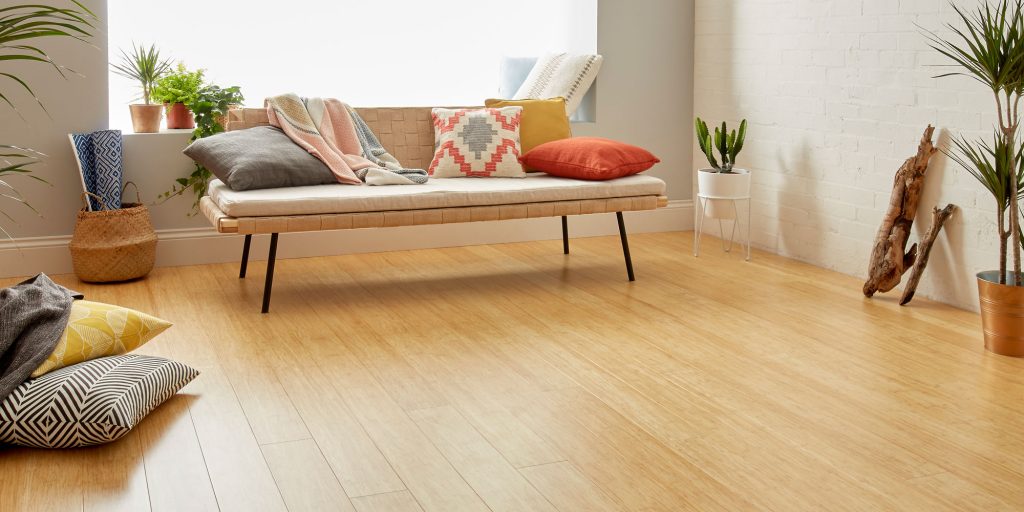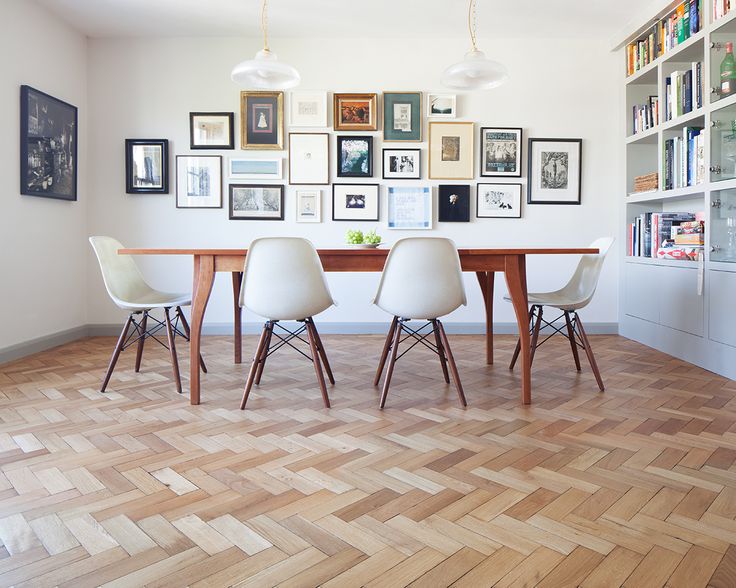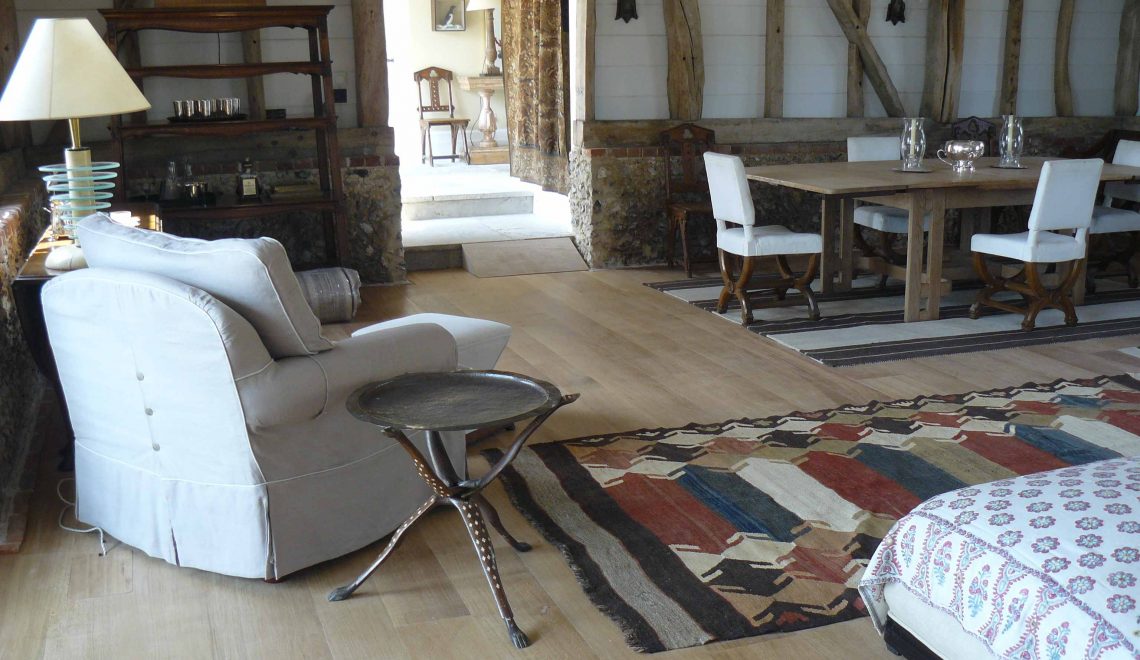They say that when you decorate a room you decide on the floor and work your way up. They also say make a decision and stick to it. Unfortunately I’ve heeded neither bits of advice – I’ve changed my mind countless times over the kitchen floor and now it’s crunch time. The easiest thing would be to continue the polished concrete in the dining space through to the kitchen. But I’ve always hankered after a wooden kitchen floor because of my mum! She maintains that they’re forgiving when you drop things and they’re less tiring to stand on when you’re cooking. So, wood it is (I think) but now I have to decide on type, style, fitting, finish etc.
One of the first decisions is whether I go for engineered boards or solid wood. Engineered boards consist of thin sheets of plywood glued together and topped with a thin veneer of hardwood. They are dimensionally stable and resistant to moisture and temperature variations hence their compatibility with underfloor heating. But I have a few reservations:
- Firstly, with only a thin veneer of hardwood the surface will wear, particularly in my kitchen, and the number of times I can invigorate them by sanding and re-oiling will be limited.
- Secondly, I worry about formaldehyde levels, particularly if I shove a heat source under them. Formaldehyde occurs naturally in wood but high concentrations carry serious environmental and health concerns. Some engineered boards contain levels of formaldehyde that greatly exceed EU safety standards, particularly if they are manufactured overseas and within a tight budget.
So I’ve decided against engineered boards but they are by no means off-limits from a green perspective. In fact, some people argue that they are more sustainable than solid boards because they preserve hardwoods by using a smaller amount. My advice, if you are going to use them, is to find out where they are manufactured and quiz them hard on the formaldehyde concentrations. Seek out boards made using plywood classed as E1 with the lowest formaldehyde levels of 0.1 parts per million. The Reclaimed and New Flooring Company use high grade European Birch ply and have compiled this really useful wood floor buying guide.
Another product I would look at if I was aiming for a sleek, modern look (especially in a bathroom) is engineered bamboo boards. Bamboo is a very sustainable material because it reaches maturity in just 5 years; it can be grown without the use of fertilizers and pesticides; and it can be harvested without destroying surrounding habitats. Plyboo has a particularly exciting range of flooring which uses FSC bamboo and coconut palm offcuts bound together with a natural binder called soybond.

Now that I’ve decided on solid wood I’ve got to decide whether to go for reclaimed or new and whether I dare put underfloor heating beneath it. Despite the assurances of many companies, I think it’s risky to combine solid wood with underfloor heating especially when the boards might be costing you £95 per m². Underfloor heating is ideal for materials with high thermal mass which hold their heat. Wood doesn’t have this quality and by heating it directly you risk subjecting it to expansion and contraction. There’s nothing wrong with a good old fashioned radiator in a kitchen especially one with a thermostatic valve that allows you to turn it up or down easily.
Reclaimed floorboards are the most sustainable option especially if they haven’t been transported over many miles. It’s important to check their age because there’s a big difference between 1 year old and 300 year old boards. Reclaimed boards come with a hefty price tag mainly due to the labour cost of removing bitumen, treating for woodworm etc. and you could be paying anything between £95 – £250 per m². But there is something undeniably lovely about laying a floor in your home that previously graced a Normandy chateau or a Lancashire cotton mill. There are lots of companies specialising in reclaimed floors including Eco Flooring UK, the Reclaimed and New Flooring Company and the Antique Oak Flooring Company. Salvage companies such English Salvage also stock reclaimed boards, often at lower prices, but you may need to do additional work to them before laying.

In terms of floorboards made from new wood the options are endless. From a green perspective I would always go for a wood that has been grown either in Britain or Western Europe because the forests are sustainably managed and the carbon miles lower. For high traffic areas, like my kitchen, oak, elm or chestnut are great options or sycamore or ash if you want a paler look. If you’re buying oak don’t be satisfied with ‘European’ as the label of origin. The look and durability of oak can change significantly depending on where it’s grown. For instance, oak grown in Northern France and Germany grows slower and has a much tighter grain than oak from Southern Europe. Make sure your floorboards are FSC or PEFC certified and if they’re from British trees the Grown in Britain logo is an added bonus. One company I’ve been particularly impressed by is English Woodlands Timber who supply well priced oak floorboards (between £45 – £65 per m²) where they can tell you exactly which forest in England or Northern France your boards come from.
The other company I have to tell you about is Freeman Attwood. Julian Attwood is more interested in planting trees than chopping them down but he sells beautiful wide, long oak floorboards from his own or National Trust woodland. To add to his eco-credentials much of his wood is windfallen rather than felled and is air-dried for 3 years before entering the kiln.
As always, this post is long and I hope I haven’t lost you. Two final things to think about when installing a wood floor is what you fix it down with and what you protect it with. If possible I would avoid glue not only because it’s hard to find one which doesn’t contain nasty chemicals but also because it’s impossible to lift the floorboards once down. The cheaper and most flexible option is nails. In terms of protection, from both an environmental and durability perspective, air-dried oils are better than lacquers or uv-dried oils. They retain the organic look of the wood, preserve its breathability and can be touched up locally. Osmo and Fiddes do a hard wax natural oil. Auro make natural wax finishes from vegetable oils which are completely free of volatile and organic solvents.


Leave A Comment